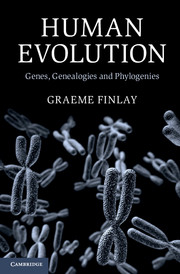Epilogue - What really makes us human
Published online by Cambridge University Press: 05 June 2014
Summary
We have reviewed aspects of the nascent and burgeoning field of comparative genomics. We have found that DNA sequences archive DNA history, and that our genome has arisen from those of (now extinct) progenitors by mechanisms that are intrinsic to genetic systems.
But it might be asserted that the interpretations placed upon the genetic data are dependent on scientists’ evolutionistic presuppositions. When we discuss presuppositions, which we all possess (even if we are unaware of them), we have left science and entered the realm of metaphysics. I have sought to reflect exclusively on science in Chapters 1–4. My guiding presupposition is that the laws of nature are consistent (albeit incompletely known) – which is an underlying assumption fundamental to scientific practice. An Alu element that arises in the human germ-line today operates through basically the same biochemical mechanisms as did an Alu element that arose in an anthropoid ancestor.
What of the charge that evolution is a religion? The genetic considerations outlined are precisely those that prevail in the starkly technical environment of a genetics laboratory. We have considered only the molecules and mechanisms of heredity. We have not approached phylogenetics from the perspective of some arcane ‘evolutionary’ logic. On the contrary, my realisation that lineages of species may be defined by characteristic genetic fingerprints had compelling power only because, as a common- or- garden cell biologist, I was steeped in the principles by which lineages of cells are defined by the same familiar categories of heritable markers.
- Type
- Chapter
- Information
- Human EvolutionGenes, Genealogies and Phylogenies, pp. 265 - 283Publisher: Cambridge University PressPrint publication year: 2013



